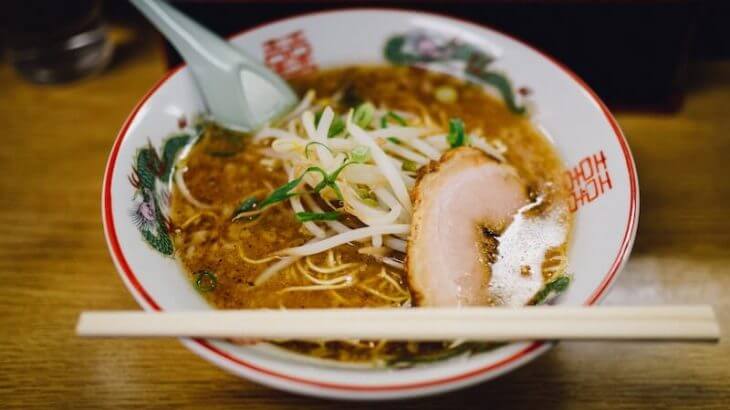What is ramen?
Without a doubt, ramen is fashionable both inside and outside Japan, but do we really know what ramen is?
If we wanted to define it more or less quickly, we could say that ramen is a noodle soup, of Chinese origin, usually prepared with a base of meat broth, which is served with a variety of toppings.
Let’s start by talking about noodles. Different ramen noodles are prepared with wheat flour, water, kansui, and salt. There are noodles of many different thicknesses and textures, straighter or more wrinkled, and each kitchen has its favorite. However, the most popular are noodles that are quite thin and not very wrinkled.
Second, the broth is the base of ramen and is usually always meat, either chicken or pork, with other ingredients such as konbu seaweed, dried katsuobushi bonito, dried niboshi sardines, veal bones, mushrooms, onions and sometimes seafood or other ingredients.
There are many types of ramen, and new combinations (such as the curry ramen typical of Hokkaido) often emerge that do not fit into any one group, although ramen is usually divided into these four large groups according to their broth:
Shio ramen, lit. of salt: this is one of the most traditional broths and most similar to the original Chinese. It is prepared with a simple chicken broth very clear, almost transparent.
Tonkotsu ramen, lit. of ‘pork bones’: this is one of the most popular broths today and one of the most complex to prepare. It consists of a thick broth of white tones, prepared with pork bones boiled for hours to remove all their sweetness.
Shoyu ramen, lit. ‘soy sauce’: this ramen is prepared by adding soy sauce to a chicken broth with vegetables, achieving a soup of dark color and light texture.
Miso ramen, lit. ‘de miso’: this ramen is prepared by adding miso paste to a chicken broth with vegetables, obtaining a soup of light color but intense texture.
There are many local varieties of ramen that have become so popular that they are known throughout the country, such as Hakata’s tonkotsu ramen, Sapporo’s miso ramen or shoyu ramen throughout the island of Honshu. Another well-known ramen is Kitakata ramen, north of Honshu, with a broth made with pork and dried niboshi sardines and characteristic flat and very curly noodles or Sapporo ramen curry with…curry!
Finally, there are many different toppings and each kitchen chooses its favorites, but normally we can find chāshū or roast pork, nori seaweed, negi green onion, kamaboko fish paste, menma pickled bamboo stems or boiled egg (and prepared in many ways).
Hattori’s Hakata Black Ramen Hanzō is a tonkotsu ramen of intense and creamy broth typical of the Hakata region, with alkaline noodles, an ajitsuke egg cooked at 65º, tender chashu pork prepared at low temperature and, naturally, a caramelized garlic sauce that gives that dark touch to the ramen and raises the umami to surprising limits.
Origin of the ramen
Although it is known that Chinese merchants and envoys had already brought ramen to Japan during the Edo period, ramen is officially considered to have arrived in Japan at the hands of Chinese merchants in the 19th century, just as Japan opened its borders to the world. In fact, this was a time of great social changes that directly affected Japanese gastronomy, which was influenced by American, European and Chinese preparations and ingredients that increased the production of meat products and preparations (in Japan Edo consumed more vegetables, fish and seafood than meat) which in turn increased the popularity of ramen.
With the allied occupation after the defeat in World War II, ramen, at that time called chūka soba (lit. Chinese style noodles), continued to gain popularity, some say for geopolitical reasons. According to Professor George Solt in his book The Untold History of Ramen: How Political Crisis in Japan Spawned a Global Food Craze, when the U.S. occupied Japan, he imported wheat as a way of containing Communism: “the more food shortages the Japanese suffered, the closer they came to the Communist Party,” so by providing them with the wheat necessary to at least prepare ramen noodles, according to Professor Solt he controlled the communist advance in Japan and was thus able to cope with the Cold War.
Be that as it may, it was in the 1960s and 1970s that instant ramen became fashionable, especially among the salary workers who would bring the country forward in what has been called Japan’s “economic miracle. During the following decades, the dish gained more and more followers as evidenced by the opening of specialized stores, ramen museums and instant ramen, video games on ramen, and so on. Until ramen crossed Japanese borders and began to conquer the United States. And from there, the rest of the world.
